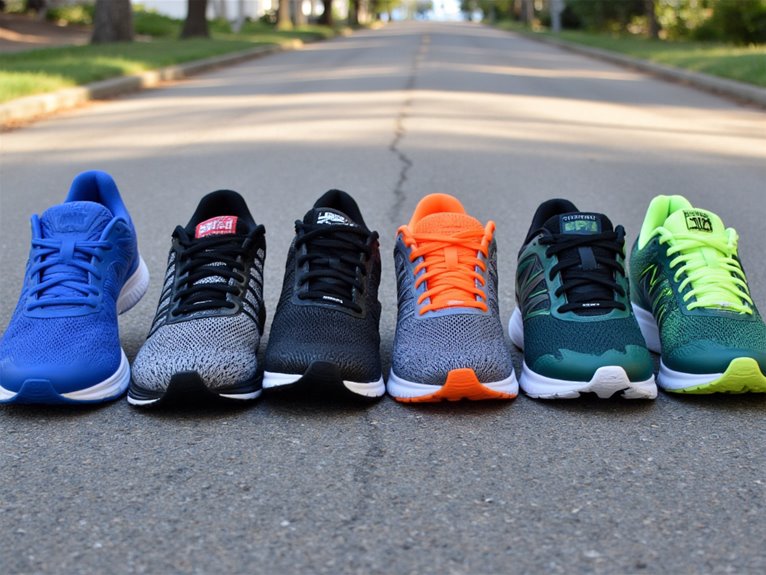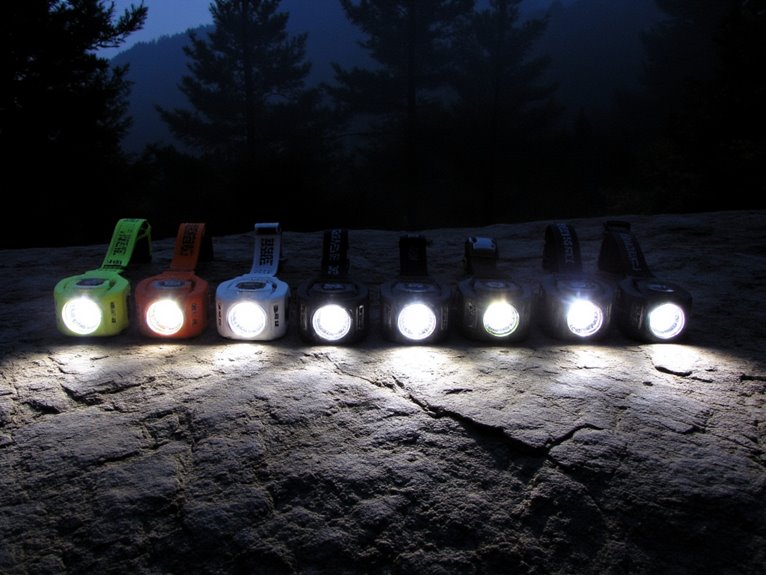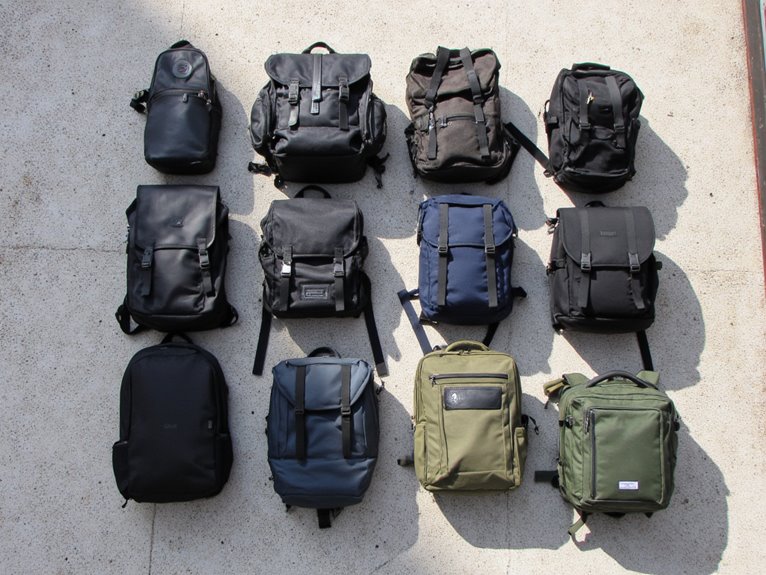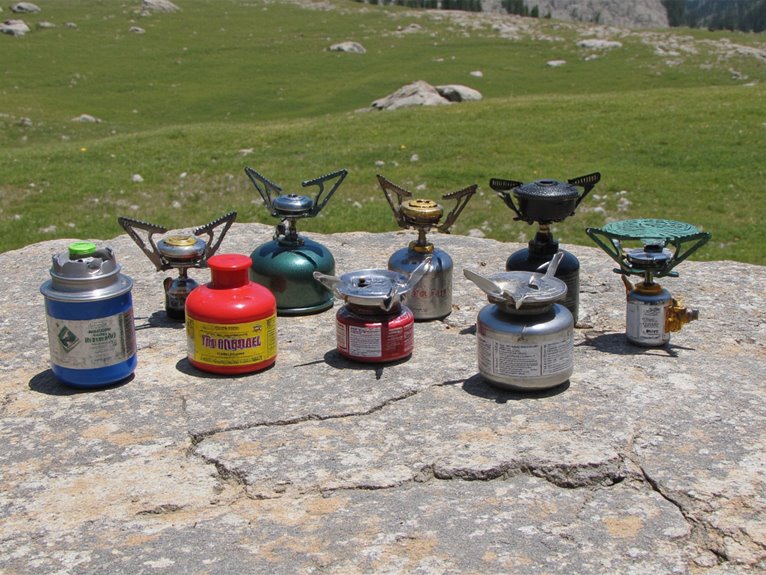Can I Use Running Shoes for Trekking?
While running shoes may seem suitable for trekking, they are ultimately ill-equipped to handle rugged trails. Lacking essential ankle support, traction, and protection, running shoes can lead to instability, sprains, and discomfort. Additionally, they often prioritize breathability over water resistance, compromising dryness and comfort in wet conditions. Trekking shoes, on the other hand, are designed to tackle uneven terrain, providing reliable grip, ankle stability, and protection from rough surfaces. To fully understand the importance of proper footwear for trekking, examine the key differences between running and trekking shoes, and discover how the right choice can enhance your trekking experience.
We are supported by our audience. When you purchase through links on our site, we may earn an affiliate commission, at no extra cost for you. Learn more. Last update on 15th January 2026 / Images from Amazon Product Advertising API.
Key Differences in Terrain
When venturing into trekking, one must recognize that trails often involve varied terrain, which can be vastly different from the smooth, flat surfaces commonly found in running environments.
This disparity is critical to acknowledge, as it substantially impacts the demands placed on footwear.
Trails often feature uneven, rocky, and rooted paths, which require more substantial ankle stability and protection.
In contrast, running environments typically consist of smooth, even surfaces, allowing for a focus on cushioning and forward propulsion.
The distinction between these two environments underscores the importance of selecting footwear tailored to the specific demands of trekking.
Failing to do so can lead to discomfort, fatigue, and potentially, injury.
Running Shoes Lack Ankle Support
Running shoes are designed for forward motion, not lateral movements or uneven terrain, which makes them ill-suited for trekking.
They often lack the ankle support necessary to stabilize the foot during twisting and turning movements.
This limitation increases the risk of ankle instability and potential injuries.
Ankle Instability Risks
Lack of ankle support in running shoes can lead to instability, making it more likely for trekkers to roll, twist, or land awkwardly, resulting in ankle sprains or strains.
This is particularly concerning on uneven or slippery terrain, where a misstep can have serious consequences.
Without sufficient ankle support, the ankle joint is more susceptible to excessive movement, increasing the risk of injury.
In addition, running shoes often have a more flexible sole, which can exacerbate ankle instability.
This lack of stability can lead to a range of issues, from minor sprains to more severe injuries, making it essential that alternative footwear options providing adequate ankle support for trekking are explored.
Limited Lateral Support
Inadequate lateral support in running shoes leaves the ankle joint vulnerable to excessive lateral movement, compromising trekking performance and increasing the risk of ankle-related injuries.
This limited lateral support is a critical concern for trekkers, as it can lead to ankle rolls, sprains, and strains.
Unlike hiking boots, which provide robust ankle stability, running shoes are designed for forward motion, not lateral movement.
This design limitation makes them unsuitable for trekking, where uneven terrain and changing directions are common.
Traction and Grip on Trails
Trail surfaces can be unforgiving, and even the most experienced trekkers can benefit from a shoe that provides reliable traction and grip.
Running shoes often lack the aggressive tread patterns and lug depths necessary for secure footing on uneven trails.
In contrast, trekking shoes typically feature deeper lugs and more aggressive tread patterns to provide better grip on various trail surfaces.
This is particularly important on steep, rocky, or slippery terrain, where a loss of traction can have serious consequences.
While running shoes may suffice on smooth, flat trails, they are not ideal for more challenging terrain.
For trekkers, reliable traction and grip are essential for safety and confidence on the trail.
Water Resistance and Breathability
When venturing into wet or humid environments, trekkers need footwear that can withstand moisture while still allowing for airflow, making water resistance and breathability essential considerations in shoe selection.
Running shoes often prioritize breathability over water resistance, which can leave feet soggy and uncomfortable in wet conditions.
In contrast, trekking shoes and boots are designed to balance water resistance with breathability, guaranteeing dry feet and comfort.
While some running shoes may feature water-repellent treatments or membranes, these may not be sufficient for trekking in wet environments.
Trekkers should prioritize shoes with proven water resistance and breathability, such as those featuring Gore-Tex or eVent membranes, to provide a comfortable and dry trekking experience.
Protection From Rough Terrain
Trekking through rugged landscapes demands footwear that can safeguard feet from rough, uneven, and rocky terrain, making protection from rough terrain a critical consideration for trekkers.
Running shoes, designed for smooth surfaces, often lack the necessary protection for trekking. They typically feature a more minimalist design, which can leave feet vulnerable to sharp rocks, roots, and other obstacles.
In contrast, trekking boots and shoes are designed with rugged terrain in mind, featuring more substantial soles, toe caps, and ankle support to shield feet from harm.
Without adequate protection, trekkers risk injuries, such as bruises, cuts, and sprains, which can quickly derail an otherwise enjoyable trek.
Weight and Packability Matters
When selecting running shoes for trekking, it's vital to think about the weight and packability of the footwear.
A lighter shoe can make a significant difference in overall comfort and endurance during extended treks.
Lightweight Materials Matter
Opting for lightweight materials in running shoes can substantially reduce overall weight, making them a more appealing choice for trekking enthusiasts who prioritize packability.
This is particularly important for multi-day treks or thru-hikes, where every ounce counts.
Lightweight materials, such as mesh panels and minimalist midsoles, can shave off significant weight without compromising performance.
Additionally, these materials often provide improved breathability, which is essential for trekkers who need to navigate varying terrain and weather conditions.
Pack Size Is Key
Compact pack size is a crucial factor for trekkers, as it directly impacts the overall weight and bulk of their backpack, allowing for a more comfortable and efficient journey.
When selecting footwear for trekking, it's essential to weigh the packability of the shoes. Running shoes, with their sleek designs and lightweight materials, can be an attractive option for trekkers.
However, their bulkier profiles compared to hiking boots may compromise pack size. This can lead to a less comfortable and more exhausting journey.
Trekking shoes or boots, on the other hand, are designed with portability in mind, ensuring a more compact fit in the backpack. By prioritizing pack size, trekkers can enjoy a more efficient and comfortable trek.
Weight Distribution Counts
How effectively the weight of the shoes is distributed can make a significant difference in the overall comfort and performance of the trekker.
A well-designed trekking shoe will have a balanced weight distribution, with the majority of the weight situated closer to the footbed. This allows for a more efficient transfer of energy and reduces fatigue.
Conversely, running shoes often prioritize lightweight materials over weight distribution, which can lead to discomfort and decreased performance on longer treks.
When choosing a shoe for trekking, look for models with a more even weight distribution to guarantee a more comfortable and efficient hiking experience.
Different Strides and Foot Strikes
In regards to trekking in running shoes, understanding the nuances of different strides and foot strikes is crucial, as it can greatly impact your overall performance and comfort.
When trekking, you're likely to adopt a more deliberate, slower pace, which can affect your stride and foot strike pattern. This, in turn, can influence how your running shoes interact with the terrain.
Heel striking: Running shoes are designed for heel striking, but trekking often requires a midfoot or forefoot strike, which can be challenging in running shoes.
Stride length: Trekking often involves shorter, more deliberate strides, which can be accommodated by running shoes, but may not be ideal.
Cadence: The slower pace of trekking can result in a lower cadence, which may not be suitable for running shoes designed for faster-paced activities.
In the context of trekking in running shoes, understanding the nuances of different strides and foot strikes is essential, as it can greatly impact your overall performance and comfort.
Impact on Your Joints and Feet
As you adapt to the demands of trekking in running shoes, the repetitive stress and altered biomechanics can exert a profound influence on your joints and feet, potentially leading to discomfort, fatigue, or even injury.
The lack of sufficient ankle support and stability can cause excessive pronation or supination, putting additional stress on your joints.
This can lead to issues like plantar fasciitis, Achilles tendonitis, or shin splints.
In addition, the constant impact on hard trails can cause bruising and inflammation in the feet, making every step a painful ordeal.
In light of these potential risks, recognizing them is crucial, and taking proactive measures to mitigate them, such as incorporating strengthening exercises and stretching routines into your training regimen, is vital.
Specialized Features for Trekking
While acknowledging the potential risks associated with trekking in running shoes, incorporating footwear with specialized features can greatly improve overall performance and comfort.
Trekking shoes are designed to tackle rugged terrain, and their unique features make all the difference.
Some key features to look for include:
- Aggressive tread patterns for improved traction on uneven surfaces
- Water-resistant membranes to keep feet dry in wet conditions
- Ankle support and stability to reduce the risk of twists and sprains




